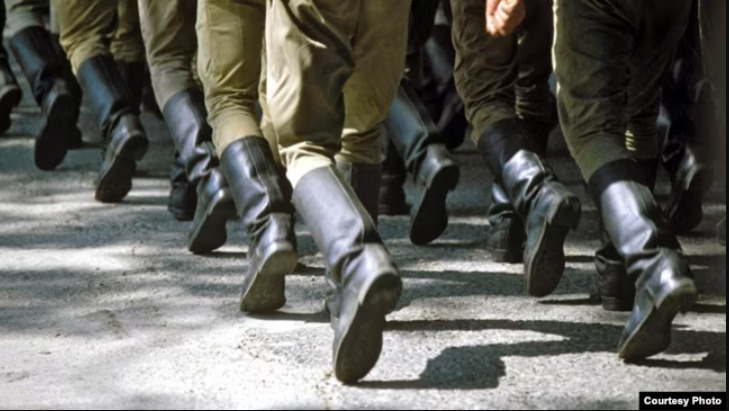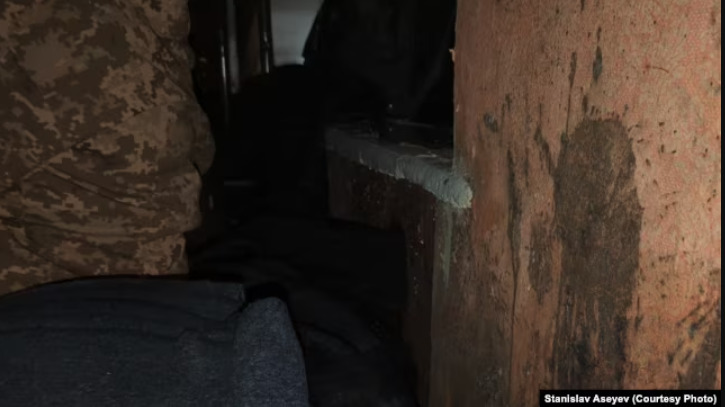Behind scenes of war: what happens in "boot camps" of AFU
In the midst of a large-scale war, Ukraine faces a paradox that few people are aware of...
Every day in Ukraine, hundreds of men are trying to avoid mobilization in some way, and thousands are afraid that they will be thrown into battle almost the next day after receiving a draft notice directly from the military commissariat.
At the same time, volunteer fighters - those who consciously want to go to defend the country - cannot get to "zero line" because of bureaucratic red tape and the total "ingrained Soviet mentality" that prevails in the so-called "boot camps" (training centers under military units designed to practice combat training and improve the level of personnel - ed.)
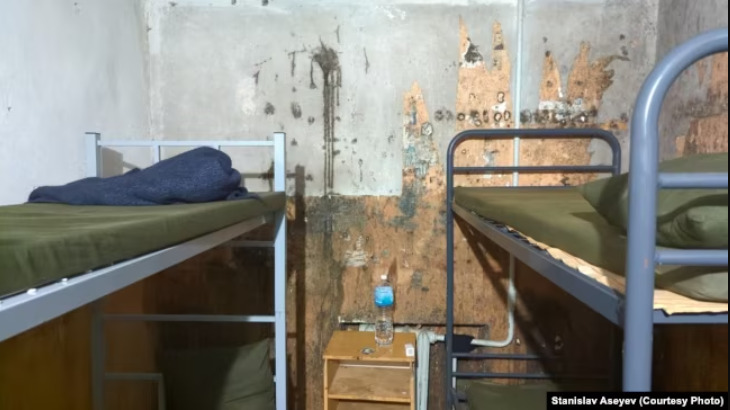
It is as difficult to get through collecting cigarette butts and "painting the grass" at the front as it is to get at least some answer to the question: how can this be possible at a time when Ukraine is facing the greatest threat to its existence and the army is in pressing need of additional combat brigades?
When asked: "Why is that?" you hear the classic Soviet answer: "according to - in compliance with".
References to endless pieces of paper, statutes, and regulations create an atmosphere of Kafka's "Castle" in the training centers: an absurdity from which no one can escape.
A vestige of the USSR
I would like to point out that my personal experience described here may not be representative. But talking to the military, it becomes clear that the vestiges of the "Soviet brass", with a few exceptions, still exist in most so-called "boot camps".
What does a volunteer fighter (yesterday a civilian) expect when he enters a training center for the first time in his life a month before being sent to the front?
Of course, an intensive training course from morning to evening, because often these people have no idea even about the correct shooting stance.
It seems to me that the entire organization of the soldier training system should be based on this: a recruit who arrives for training knows nothing and needs to be taught everything from scratch.
If someone knows and can do more, it is only a nice bonus.
Instead, in reality, you end up in a forced labor camp for an indefinite period of time.
Before the official start of training, I spent more than two weeks (some people spent a month) on the string, when you are kept in military units as a laborer who hears from afar the shots of the lucky ones who have already been issued a machine gun. No one can say for sure how long a recruit will be kept in this status. How and why does the TCR (Territorial Centre for Recruitment) say that training will begin almost from the first hour you arrive at the training unit.
In reality, a recruit can drive all over several "boot camps" in a country for a month before finding the one that is ready to accept him.
As for me, us, from the moment we arrived at the "boot camp", we began to lose health, time, and motivation.
At the same time, in my case, the path to "boot camp" was as simple as possible:
- I arrived at the position of the brigade where I was going to serve,
- I got to know my immediate superiors,
- I took the brigade's letter of introduction,
- I came with it to the TCR and mobilized.
This was the adequate part of the process because then our group of recruits was brought to the training center, the conditions in which were more like a combination of a TB clinic and a detention center: mold, fungus, humidity, full of patients who are given children's flu jelly at a temperature of 39.
There was no communication with us, the newly arrived future defenders of the country, during the first days.
We just randomly wandered from one platoon to another, collecting garbage, collecting firewood, sorting pallets, until I managed to meet with the unit commander with the assistance of the General Staff. He allowed me to ask "questions that concern me":
- I am a volunteer fighter who is supposed to go to "zero line" in a month. The question is: why have I been collecting candy wrappers on the territory of the unit for a week now? Where is the training?
In response, I heard that the training process begins "according to the relevant order", which does not exist. So, they have no right to involve us in training.
No one can say when and whether this order will be issued in this particular unit, or why the TCR brought us here right now.
To summarize: while we are waiting for the order, we continue to collect wrappers and sort pallets.
An interesting thing: when practical training finally started in the company adjacent to us, I heard from one of the kaydet after the next duty:
- Tomorrow we have to go to the damn shooting.
After two or three weeks of "coloring the grass," the recruit simply forgets why he is here and that it is the "coloring" that should irritate him, not the training firing. By the way, the kaydet was worried in vain: since their company was the last to fire, it happened at night and was purely formal, because the munition package had to be fired.
Since the training never started for us in the first "boot camp" and because of pressure from the General Staff, our stay became a problem for the leadership, the latter transferred us, newcomers, to the next training center, where the moldy building was replaced by tents in the forest.
However, it didn't matter much to me, because I left the first "boot camp" quite sick.
The second training centre already resembled a full-fledged colony: training started here after a while, which officially opened the door to the work uniform, the axe and 15-hour KP duties for firewood and the kitchen.
In addition, we were greeted by the recruits from the previous course who were left here for the second round and now passed on their experience to us.
To be fair, the second training center treated the patients more responsibly, so when it became difficult for me to lift an axe, I was taken off duty and sent to the hospital, where I was hospitalized with acute bronchitis and low saturation as a legacy of "combat skills" from the previous so-called training center.
But let's take a closer look at some of the components of preparing people for war.
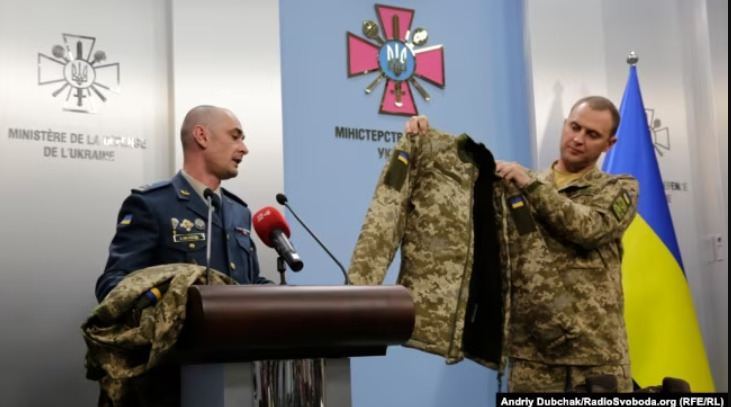
Clothing and equipment
There are no problems with equipment: the training unit provides everything you need, from socks to tactical goggles and raincoats.
But there are questions about the quality of the form, at least in the first "boot camp" where we were given this form.
Personally, the slides on both jackets came off on the third day. At first, I just zipped up the top with a touch fastener, then sewed the slides and pulled over, because the warehouse could only replace it with a set that was two sizes too big. Eventually, I gave up and wore my civilian military jacket until I bought a proper set in the city.
At first glance, it may seem that a soldier's appearance is insignificant against the backdrop of global training problems, but believe me, it is not.
Any professional military officer will tell you that the key to winning over the enemy is motivation.
Not superiority in weaponry, not combat skills, but motivation above all. Without it, even the latest Western equipment is abandoned, and personnel runs away.
And vice versa: motivated volunteer fighters with only grenades and assault rifles in the first days of the full-scale invasion showed miracles of resistance.
Arms are just a tool in the hands of motivation.
So, all of this demotivates the recruit - in a low-quality uniform, which is two sizes bigger - to the level of the infamous Russian "chmonia`s" (chmonia (Andrei Rjazantsev) - the 37-year-old former teacher from Gorlovka, drafted into the Russian Army and captured by Ukrainian soldiers on March 1, 2022, turned into a Youtube and Tick Tock war celeb with millions of views.- ed. note)
This kills any motivation to move forward in this system from the very beginning.
Anyway, it is better to come to the training centers with your own uniform and shoes, preferably in two sets.
Food
It all depends on the specific unit in which the recruit is stationed.
The food in the first "boot camp" was much better than in the second, but in the hospital I met guys from neighbouring "boot camps" who were even given juice with chocolate, meat instead of rubber sausages.
It is difficult to say what exactly this depends on.
In general, meals are provided three times a day and include a typical army ration: porridge with stew or sausage, soups, vegetable salad, bread, butter, biscuits and tea.
Personnel
Metaphorically speaking, in my case, the "boot camp" was revealed to be an inside-out on February 24, 2022: falling epileptics, "trusties" ex-convicts, prolonged AWOL (prolonged absence without leave) (several cases of leaving units in the first two weeks), and many random people with no relation to any brigade waiting for "buyers".
Some openly said that they had come for money to pay off their debts. The feeling that we were here for a common cause has completely disappeared.
However, the composition of the recruits was still different in both training centers. In the first, seventy percent of the recruits came purposefully for a contract, often already having at least some idea of how to handle weapons or even combat experience.
While in the second training centre, the volunteer sector was minimal and the age range was mostly 40+.
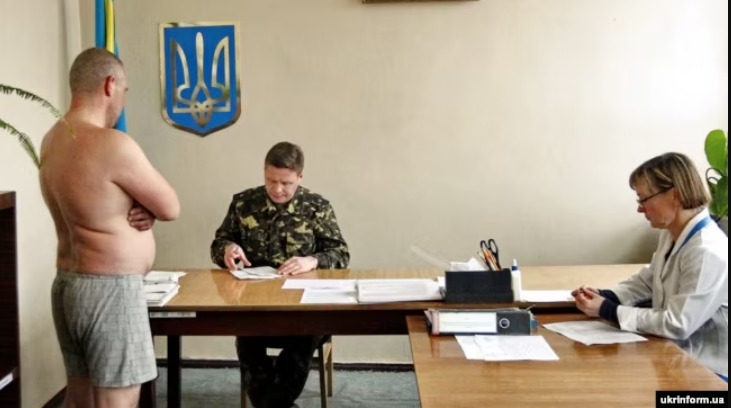
Most of the recruits were mobilized and frankly random people in the army: some with criminal records, serious illnesses, lacking motivation and education (one could not even write).
In the course of training, because of attacks that happened to the recruits on the street, several epileptics were diagnosed, and in the hospital, two recruits were diagnosed with hepatitis during the first blood test.
Why did the Military Medical Commission decide to ignore this?
In addition, they also brought us a homeless man: the TCR offered him a "winter in warmth", washed him, bought some clothes in a second-hand store, and threw him to us in the forest. The only thing that the military commissars forgot to mention was his legs, which were literally rotting and swelling, which is why he was taken to the hospital the next day and returned as quite fit for service.

So why should we be surprised that men are running away from the TCR? And they are doing so at the same time as in Kyiv, Lviv and other large cities, you have to book a place in a restaurant in advance to get in.
And this is another fact: people no longer want to fight. You can deny this, shoot patriotic stories about "Potemkin villages" for the leadership instead of real "boot camps", mention Bucha, Irpin, and the constant shelling of cities. But on Wednesday afternoons, during air raid alerts, you have to queue up to get into Kyiv restaurants. And the contingent that finds itself in the "boot camps" despite this is only a reflection of this reality.
These are the people who were unlucky enough to get to the capital's (Lviv, Dnipro, etc.) desks, not those who are honored not to be at them now. The volunteer movement has long been working on creativity - for donors, it is no longer enough to simply mention that there is a war in Ukraine. It is exactly the same with mobilization.
So the request for 500,000 mobilized from here - from the USSR with the next ones in the "red corners" - looks like a mass sacrifice ceremony.
The military students joke bitterly that when they meet the enemy, they will start coughing loudly in its direction and throwing firewood - all they have learned in a month.
By the way, my purely subjective sample of mobilized (not volunteers) geographically gathers people from the hinterlands of the regions, not from regional centers.
All of this is a problem that should have been discussed yesterday, otherwise half a million unprepared Ukrainians would face several million unprepared Russians, and a calculator would solve everything.
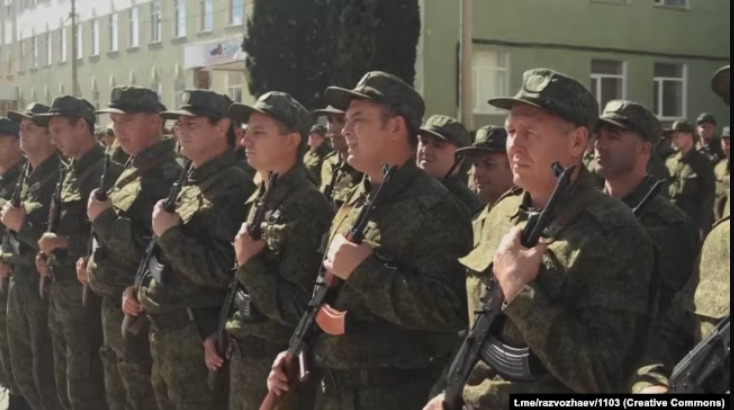
You can't win without ideas
There is no ideology where there is firewood and pallets.
The ideological component is not just at "zero", it is negative.
One of the officers, right in front of the line of military students, said that he didn't care about them when they asked why they were being excused from the trainings to unload pallets.
This is not surprising, as boot camps are often referred to as "sludge holes" for those officers whose military careers are over. And of course, where else to put them but to train future soldiers...
But the worst of all, in my opinion, is what happens to those - now very rare - volunteer fighters.
In the first "boot camp" I met several guys aged 19-23 who were going to go to the front as assaultmen. Of course, they will have a chance if they find themselves in a training center of a brigade like the Third Assault Brigade: with brilliant training and a powerful ideological core, whose experience has not yet been scaled up within the Armed Forces. But such units are few and far between.
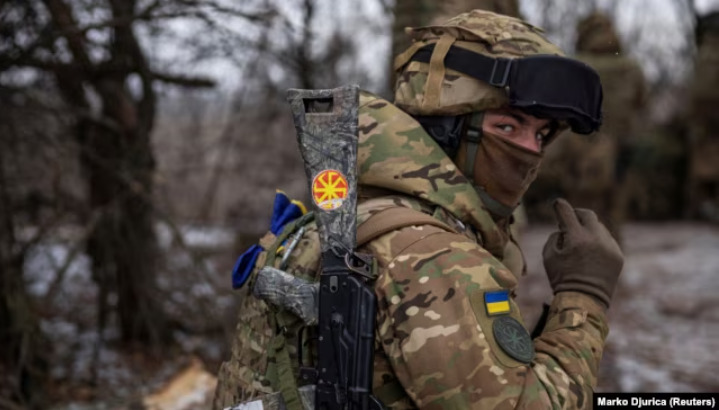
What I saw around me was more like a pioneer camp without any idea of the hell of warfare or even worse, captivity.
These children (and often adults) simply did not realize that in a month they would face those who cut off the heads of still-living prisoners and leaked videos of the execution on Telegram; threw wires on their genitals and turned on the electricity; raped women and burned their bodies in the yard.
It has been established that during the period of the invasion, the oldest victim was 82 years old, and the youngest was four. All this has not disappeared and in a month's time will be a question mark for anyone who goes to "zero line".
Who knows, perhaps the motivation is closer than we think, and it is worth systematically reminding military students of all this in a special course through terabytes of war crimes. And then the desire to simply pay off the loan will be replaced by the desire to win and survive.
By the way, I offered my help in this regard, because abroad I gave lectures on the psychological characteristics of human behavior during interrogation with the use of torture. But here in the "boot camps" the reaction to my proposal remained at the level of "great ideas."
Eventually, I told one of the commanders: "You are training the 'two hundredth' here. And it is also your fault if they don't even realize it."
Ping-pong, or "buyers"
The last part of the training process is in some ways a duplication of its beginning: the chaos of moving newly "trained" fighters around the country, or ping-pong.
When the question arises as to which brigade the recruit should eventually be assigned to, it turns out that neither the relationship nor the recruiting programs of the brigades (a couple of guys sent their resumes and were interviewed for a specific position) matter.
Half a day before I was to be sent to my brigade, I suddenly learned that I was being sent to a completely different unit in a completely different direction. The same thing happened to the vast majority of military students. There was chaos of calls to friends who could either quickly influence the situation or transfer a person to the right brigade at least a month in advance. Therefore, even those recruits who took the advice of the (absolutely logical) Ministry of Defense and chose in advance the unit, position and team they want to serve in, cannot influence this process before the "buyers" - people who simply fill the holes in their own brigades with yesterday's military students.
For volunteers, this means that, for example, a potential UAV operator with an IT education becomes an APC driver, or, as in my case, instead of a combat position at "zero line", you end up in someone else's brigade as a staff member.

Is this the army?
"This is the army" is a phrase I heard everywhere, even from military students when discussing everything that happens in training centers.
In other words, it sounds like this: "This is Ukraine, and this is the norm here, so forget it, don't mind it." One of my comrades-in-arms, who was waiting for me at "zero line" from "boot camp," said it bluntly:
- Do you want the truth? After your article, they will wash off the mold, paint the walls, give a reprimand to the conditional captain, and tomorrow it will be the same here, not to mention the whole country. The same thing happened to me a year ago, the same thing is happening to you now, and the same thing will happen here in a year. Because this is an army of millions, and globally, against the background of weapons, drones, shells, fortifications, prosthetics, rehabilitation, no one cares about "boot camps". Yes, the foundation of this million-dollar building is sinking, and eventually everything may collapse. But as long as the top professionals at the front are staggering but firing, no one will pay attention to the feeble moans below.
I always want to add a question mark to this phrase: "Is this an army?". Because if you say it in Israel or the United States, it will not be understood even on a cultural level.
The word "army" does not mean absurdity and unprofessionalism, a waste of time, energy, and health, especially during a war. And the worst thing is if we ourselves accept what should not be the norm.
So, for me, this is not a complete thought, but only a question mark - is it an army?
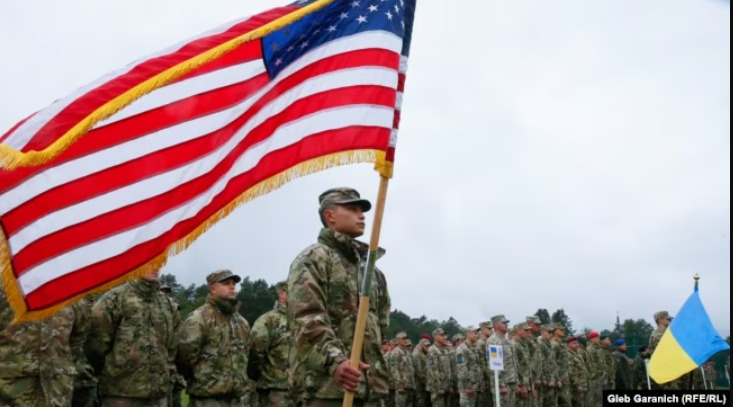
Training in the team
This review would be incomplete without comparing the general army "boot camps" with the "boot camps" of the brigade, where the military student joins as a soldier for service.
After I was quickly transferred from an unfamiliar brigade to my own (again, thanks to the General Staff), I immediately felt a striking difference between the atmosphere of the front and sorting pallets. I will mention only two key things.
The first thing that catches your eye is the horizontal communication between commanders and personnel. Actually, the commanders still need to be recognized, because the style of communication with subordinates makes everyone equal, regardless of rank and position.
All formalities and almost awe before the senior officer disappear.
Everyone realizes that right now, everyone is risking their lives, and there is simply no time for formalities.
"They will not send you further than zero" is a maxim that fully forms the logic of the relationship between commanders and personnel on the front line. At least in our unit.

The second point is that I gained more experience in just one day at the training ground than I did in two months of roaming around in the "boot camps".
Of course, this is primarily due to the individual approach that our own brigade can provide to a newcomer, as opposed to hundreds of military students who need to be trained.
For example, it is now possible to shoot the amount of ammunition in a day that was shot in a week in the "boot camp". The same applies to operational training in all types of weapons that are available in the field and are often simply not available in training centers.
This means that a soldier is quickly and efficiently specified in the chosen combat area in his own brigade. This, in turn, raises the question of the expediency of the all-military "boot camps" as such.
What to do?
What is the solution?
I would like to point out that it makes no sense to extend the duration of the training while maintaining the system.
The fact is that even if the "responsible person" personally goes through all the "boot camps", the "according to - in compliance with" will win anyway, because inspecting this system only feeds it.
In our unit, leadership inspections took place almost every week at the level of counting trees in the forest (literally) and designing a model of a clean toilet for the general, rather than effective time and task management.
This system cannot be changed unless new blood is injected into it: replacing Soviet officers with combat officers with a completely different vision of life and values. But even this will objectively take years, because the system will resist, and such officers are now needed at the front like air.
A possible way out is for the state to license private training centers and recognize their certificates at the level of state ones.
Following the example of private sniper courses or Tactical Combat Casualty Care and UAV courses.
The instructors in such centres can be partly the same combat sergeants, who, together with the military soldiers, are freed from the "ingrained Soviet mentality" and the absurdity of state "boot camps" and concentrate exclusively on the practice of combat conditions.
The funds for this can be taken from the salaries of military students, who are currently paid 20 thousand hryvnias per month (600 thousand hryvnias per platoon). These 20 thousand hryvnias eventually turn into the coffin of an untrained soldier, as instructors themselves constantly say, trying to teach a military student to at least hold a Kalash correctly.

In general, all the benefits of "boot camp" that can be collected here are for combat sergeants (rarely officers) and are concentrated in the last two weeks of intensive training, if you are lucky enough to have instructors, as we were in both training units.
But honestly, even this model of change takes time: at least to turn the legislative machine in the right direction.
Therefore, another option is to maximize the amount of training abroad, ideally with Ukrainian combat instructors.
Perhaps it is worth trying to create a network of foreign training hubs that would combine Western infrastructure with the combat experience of the best Ukrainian instructors.
Yes, training abroad is still taking place, but it is often far below the required level or far from the realities of the Ukrainian front, as emphasized by combat instructors with whom I have spoken and who have completed a Western course.
Therefore, the big problem with the Ukrainian "boot camp" is also the complete failure to communicate this topic with society: the unknown breeds fear, fear paralyzes the will and leads to inaction and stupor.
What is the phenomenon of the Third Assault Brigade?
These people have made themselves crystal clear: everything is as clear and understandable as possible as to what exactly awaits a recruit.
This path - between civilian life and the frontline - should be equally transparent for everyone who will risk their lives at "zero line" in a month.
Stanislav Aieiev, writer, journalist and blogger, Ukrainian Armed Forces serviceman for Radio Liberty

